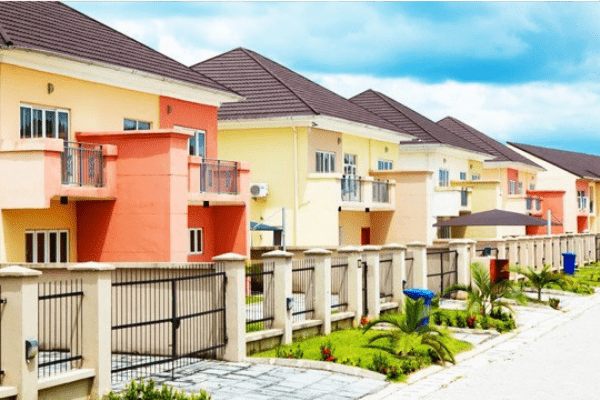ivaj1013774716
ivaj1013774716
Glossary – Gordon Commercial Real Estate Brokerage
Base Rent The minimum month-to-month rent due under the lease – normally calculated on a per- square-foot-per-year basis.
Base Year First year of the lease.
Build-Out Describes the interior construction of a tenant’s area whether brand-new building and construction or the reconfiguration of existing space.
Commission The cost paid to a realty broker for his/her services rendered in a property transaction.
Common Area Maintenance (CAM) An additional, annual charge often assessed to tenants for maintenance of the residential or commercial property’s “common area”. Includes interior products; entranceways, corridors or restrooms, and exterior items; parking locations, grounds and outside painting.
Cost of Living Increases Increase to base lease tied to increases in US Department of Labor Consumer Price Index (CPI).
Consumer Price Index (CPI) A step of inflation as identified by the US Federal Government by utilizing a “basket of goods”. Used in leases as an unbiased standard for the estimation of escalations.
Effective Rent Equals contract lease less free rent and any cash allowances such as a lease buyout or moving allowance. Escalations written into the lease are included in the calculation of efficient rent. Tenant improvement allowances and brokerage commissions are not subtracted from the agreement rate in computing effective lease.

Escalation Leases frequently consist of escalations or stepped increases in lease to be paid by the tenant to the proprietor at a given future date. This can be every year, for example, year five of a 10-year lease, or set to an index such as CPI.
Complete Lease Lease type in which property manager pays all costs including taxes, utilities, janitorial, etc in the base rent. Tenant pays increases in business expenses over the base year.
Gross Square Feet Usually refers to gross area of a building by determining from the beyond its exterior walls and including all vertical penetrations, such as elevator shafts. Also consists of basement space.
HVAC Acronym for heating, ventilation and cooling.
Industrial Gross (IG) Lease Lease type in which tenant pays most however not all operating expenditures in the base rate. In addition to base lease, occupant pays energies, common area upkeep, and frequently the increase in residential or commercial property taxes and insurance over base year.
Industrial Space Space in structures zoned for commercial uses. Not available for workplace use unless a modification of use license is filled and approved by the preparation department.
Lease Type of legal arrangement developing a residential or commercial property owner-tenant relationship.
Lease Commencement Date Date upon which the lease commences and the obligations of the celebrations begin (see likewise “rent beginning date”).
Lease Term Length of the lease.
Leasehold Improvements Construction or enhancements for the purpose of preparing the facilities for the conduct of occupant’s service. Improvements completely connect to the facilities unless they are trade fixtures, and they remain with the properties after the end of term of the lease.
Lessee Tenant.
Lessor Rental residential or commercial property owner or property manager.
Load Factor The quantity of square video footage in a lease, in addition to an occupant’s functional square footage, which represents renter’s pro rata share of the building’s common area/s. May likewise be referred to as a portion of building’s rentable square feet.
Office Category Office space is loosely classified based upon the quality of building, functions and the status of place:
Class A. Most distinguished structures competing for leading workplace users with leas above average for the location. Buildings have high quality standard finishes, cutting-edge systems, exceptional ease of access and a certain market presence.
Class B. Buildings completing for a vast array of users with rents in the average variety for the area. Building surfaces are fair to helpful for the location and systems are adequate, however the structure can not compete with Class A at the exact same price.
Class C. Buildings completing for occupants needing practical area at rents listed below the area .
Operating Expenses Costs associated with earnings producing residential or commercial property generally before interest and earnings tax expense, however consisting of residential or commercial property taxes, insurance, repairs and upkeep, replacement reserves.
Pass-Through Expense An expense connected with occupancy in which proprietor “passes through” to tenant particular boosts in building operating costs happening after a base year in the lease.
Permitted Uses Contact City to see what’s permitted at the location.

Quotas A zoning system overseen by the City of Berkeley where only a particular variety of certain usages are permitted in the district at any one time, and a few of these usages are likewise based on square video footage limitations. Quotas are in effect in the Elmwood, Telegraph Avenue and Solano Avenue areas.
Real Residential or commercial property Taxes Taxes due on building and structural elements.
Renewal Option Lease language that supplies the means for occupant to offer property manager notification of its intent to renew (extend) the lease.
Rent Basis Designates what operating costs are consisted of and left out in the lease. The most common lease bases are:
Full Service: All expenses of operation are paid by the landlord as much as a base year. Tenant pays increases in operating costs over the base year.
Triple Net (NNN): All expenses of operation consisting of, however not restricted to, property tax, insurance and common location upkeep are borne by the tenant on a professional rata basis.
Modified Gross (MG): any arrangement where the renter pays several of the expenditures covered by the property manager in a Complete Service lease, but not all of the expenses as in a Triple Net lease. Modified Gross rents cover a variety of lease types and terminologies utilized in different markets around the country. Some of the more typical are Industrial Gross, Single Net and Double Net. The meanings of these bases differ from market to market depending on the expenditures they include or exclude.
Net of Electric: A popular kind of Modified Gross, this is like a Complete Service lease, however the tenant pays for his/her electrical charges either to the energy business (according to a meter) or to the landlord on a professional rata basis.
Rent Commencement Date Date upon which the lease and typically the regard to the lease begins. May be various from the lease start date when particular obligations should be satisfied such as the building of tenant enhancements.
Rentable Area Denotes the number of square feet in an industrial building deemed to be rentable. May consist of a common area load factor or allowance for constructing features such as corridors and lavatories.
Retail Space generally scheduled for retail use. May also be readily available for office use.

Down payment Deposit of money by a tenant with a proprietor to secure performance of a lease. Generally equal to one month of rent.
Setback Zoning requirement that needs a building or an improvement to be held up a particular variety of feet from the residential or commercial property line.

Sublease Sublease space is provided on the marketplace by the current renter for sublease, no matter whether the space is occupied or vacant. Often a sublease tenant undergoes property owner approval.
Triple Net (NNN) Lease type in which the lessee spends for its share of the residential or commercial property’s taxes, insurance, typical area upkeep, and their own operating costs.


